 The other day it was hot in the Chicago area, and I decided to run to the grocery store to get some sugar-free ice cream for my diabetic spouse. As I trudged through the hot blacktop parking lot, I saw an unfortunate sight . . . a volunteer sweating his rear-end off standing behind a booth selling raffle tickets for the Knights of Columbus (see picture to the right). I was immediately reminded of a time not-so-long-ago when that used to be me.
The other day it was hot in the Chicago area, and I decided to run to the grocery store to get some sugar-free ice cream for my diabetic spouse. As I trudged through the hot blacktop parking lot, I saw an unfortunate sight . . . a volunteer sweating his rear-end off standing behind a booth selling raffle tickets for the Knights of Columbus (see picture to the right). I was immediately reminded of a time not-so-long-ago when that used to be me.
The year was 2000 and I had just been hired as the new executive director of the Boys & Girls Club of Elgin. Just the year before this organization attempted to run its first Duck Race special event fundraiser. Without going into the details, it didn’t make them money. However, I was young and dumb. I was an inexperienced and a newly minted executive director. I had seen a very dear friend run a Duck Race in a different community, and he had been wildly successful netting close to $100,000.
If he could do it, then I could do it. After all, how hard could it be? All it seemed to entail was:
- selling corporate sponsorships,
- standing in high traffic areas and selling $5.00 duck adoptions to people who want a chance at winning a new car, and
- putting numbers ducks in the river and pulling the winners out of the water to determine who wins which prizes.
What was the big deal? OMG . . . I wish I knew then what I know now.
As I approached the poor hot and sweaty Knights of Columbus volunteer, all of the pain came flooding back to me:
- Recruiting 100 volunteers to help with every aspect of the race (e.g. marketing, tagging ducks, putting ducks in the water, taking ducks out of the water, data entry, and not to mention selling duck adoptions),
- Organizing countless teams of volunteers to sell duck adoptions and trying every trick in the book to create a sense of fun-excitement-competition,
- Chasing down volunteers to sign-up for weekend sales shifts (standing outside of the same grocery store where the Knights of Columbus volunteer was sweating),
- Spending the entire weekend driving from sales location to sales location to support the volunteers by replenishing petty cash banks, restock merchandise, and fill gaps in between shifts where necessary, and
- Personally filling holes in the schedule . . . standing outside of the grocery store or hardware store or bank . . . yelling out your sales pitch at people leaving the store . . . getting scowled at by people who don’t appreciate the disturbance . . . selling an adoption to approximately one-out-of-ten people.
 These five bullet points are just the tip of the iceberg. The fact of the matter is that we started planning next year’s Duck Race in the immediate days and weeks after wrapping one up. This special event raffle was a year-round affair.
These five bullet points are just the tip of the iceberg. The fact of the matter is that we started planning next year’s Duck Race in the immediate days and weeks after wrapping one up. This special event raffle was a year-round affair.
For me personally, it represented an eight week period of my life every year when I worked seven days per week . . . 56 days in a row without a day off for good behavior. I did this for six years, and when I was weighing the options associated with another job offer, the Duck Race was one of the Top Five reasons I left for greener pastures.
As I passed by the Knights of Columbus booth for the refuge of an air conditioned store, I put my head down and refused to make eye contact with that poor volunteer (just like thousands of other people did to me when I was selling duck adoptions). The last thing that ran through my head was the promise I’ve made myself to never work for a non-profit agency that runs any kind of raffle. The following is a list of reasons for this decision:
- Raffles are nothing more than gambling and there are laws, rules and regulations that don’t seem to be worth the time, energy or effort.
- Raffles entice donors to make a contribution to your charity for reasons other than your mission and getting these donors to crossover to other campaigns or events is next to impossible.
- Raffles involve prizes which means you better not mess things up or you run the risk of being sued.
- The record keeping is overwhelming and can involve double and triple entry of financial data depending on how your donor database, financial management system and raffle software are configured.
- Opportunity cost and return on investment calculations point to greener pastures when you look at using the same amount of time in other fundraising efforts (e.g. annual campaign pledge drives, etc).
The bottom line for me is that selling raffle tickets and chances should be an activity that is beneath every non-profit board volunteer. Their time is too valuable to ask them to sweat outside of a grocery store selling raffle tickets $5.00 at a time. How many donors could they have sat down with in the same amount of time and asked for a $250, $2,500 or $10,000 pledge?
Here is another way to think about it. If you don’t have the type of volunteers who feel comfortable sitting down individually with important donors and if your volunteers are more willing to sell raffle chances, then you probably have the wrong people sitting around your boardroom table. Perhaps, these people are well-intentioned fundraising volunteers, but they certainly aren’t good board prospects.
If this last revelation upsets you, please accept my apologies. However, don’t dismiss this thought too quickly. Like a good cup of tea, let this idea steep and then share your thoughts in the comment box below.
Here’s to your health!
Erik Anderson
Founder & President, The Healthy Non-Profit LLC
www.thehealthynonprofit.com
erik@thehealthynonprofit.com
http://twitter.com/#!/eanderson847
http://www.facebook.com/eanderson847
http://www.linkedin.com/in/erikanderson847

 Welcome to O.D. Fridays at DonorDreams blog. Every Friday for the foreseeable future we will be looking at posts from John Greco’s blog called “
Welcome to O.D. Fridays at DonorDreams blog. Every Friday for the foreseeable future we will be looking at posts from John Greco’s blog called “ As time passes, the waves of change crash against your seemingly rock solid organizational exterior, but change is slowly occurring. Here are just a few examples:
As time passes, the waves of change crash against your seemingly rock solid organizational exterior, but change is slowly occurring. Here are just a few examples:
 For example, I concluded that I would want the super human ability to “read people’s minds“. As I started thinking about why I might want that superpower, I concluded that knowing what a donor wants and how they want it would make me one of the best fundraising people on the planet.
For example, I concluded that I would want the super human ability to “read people’s minds“. As I started thinking about why I might want that superpower, I concluded that knowing what a donor wants and how they want it would make me one of the best fundraising people on the planet.
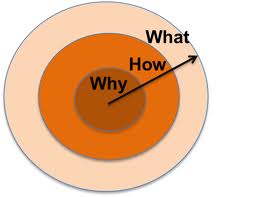 Those organizations that excel at strategic planning have a very clear understanding of what they do, how they do it, and why they exist. However, those organizations that are little fuzzy on these ideas do a lot of wrestling with themselves. Sometimes countless hours are spent at the 50,000 foot view talking about these issues . . . and for good reason! Without clarity on What-How-Why, there is no way you can set goals, develop objectives and write action plans that are meaningful in any way, shape or form.
Those organizations that excel at strategic planning have a very clear understanding of what they do, how they do it, and why they exist. However, those organizations that are little fuzzy on these ideas do a lot of wrestling with themselves. Sometimes countless hours are spent at the 50,000 foot view talking about these issues . . . and for good reason! Without clarity on What-How-Why, there is no way you can set goals, develop objectives and write action plans that are meaningful in any way, shape or form. When I used to work at Boys & Girls Clubs of America (BGCA), my colleagues were responsible for the existence of something called theFUNDRAI$INGbank, which is a special webpage embedded inside of the intranet accessible to local affiliates. We outsourced maintenance of this page to FundRaisingInfo.com. There were many different resources located on “The Bank” including a free service called “Ask The Expert“.
When I used to work at Boys & Girls Clubs of America (BGCA), my colleagues were responsible for the existence of something called theFUNDRAI$INGbank, which is a special webpage embedded inside of the intranet accessible to local affiliates. We outsourced maintenance of this page to FundRaisingInfo.com. There were many different resources located on “The Bank” including a free service called “Ask The Expert“.
 September 15, 2008 . . . do you remember where you were and what you were doing? It was the day the world changed. It was what some people have called an “economic 9-11″. Regardless of how you characterize the day that Lehman Brothers filed for bankruptcy and the stock market started its crash, it is hard to argue the following: 1) the economic paradigm we all used to live in shifted and 2) nothing will ever be the same again.
September 15, 2008 . . . do you remember where you were and what you were doing? It was the day the world changed. It was what some people have called an “economic 9-11″. Regardless of how you characterize the day that Lehman Brothers filed for bankruptcy and the stock market started its crash, it is hard to argue the following: 1) the economic paradigm we all used to live in shifted and 2) nothing will ever be the same again.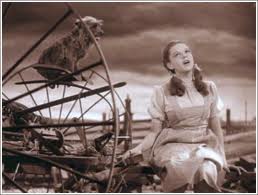 Mentally take a look around your board room and see if you can identify how many Dorothy-like volunteers occupy chairs. They are kind folks (dare I say friends) who look and sound like the following:
Mentally take a look around your board room and see if you can identify how many Dorothy-like volunteers occupy chairs. They are kind folks (dare I say friends) who look and sound like the following: Don’t get me wrong. I am not suggesting a “witch hunt” to root out these folks and fire them. Dorothy serves an important role on your board. She is that cautious voice that keeps you from getting into trouble. She will stop you from pulling the plug on your annual campaign and direct mail appeals and “going all in” on ePhilanthropy efforts. Valuable? YES! However, what happens when you have too many Dorothy-like board members? Or what if you have those well-intentioned people serving in the wrong roles (e.g. board president, annual campaign chair, strategic planning committee, etc)?
Don’t get me wrong. I am not suggesting a “witch hunt” to root out these folks and fire them. Dorothy serves an important role on your board. She is that cautious voice that keeps you from getting into trouble. She will stop you from pulling the plug on your annual campaign and direct mail appeals and “going all in” on ePhilanthropy efforts. Valuable? YES! However, what happens when you have too many Dorothy-like board members? Or what if you have those well-intentioned people serving in the wrong roles (e.g. board president, annual campaign chair, strategic planning committee, etc)?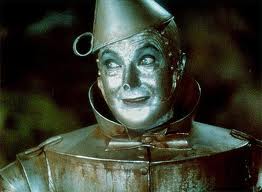 There are 9-keys to “inspiring and managing yours board for fundraising success”. In fact, the reality is that these 9-keys are the same nine things you need to do to “engage” anyone in anything. However, I believe that these nine concepts are not all equal. While all are important, I have come to realize that the most important and most difficult engagement tool was best summed up by the “Wizard of Oz’s” Tim Man in this
There are 9-keys to “inspiring and managing yours board for fundraising success”. In fact, the reality is that these 9-keys are the same nine things you need to do to “engage” anyone in anything. However, I believe that these nine concepts are not all equal. While all are important, I have come to realize that the most important and most difficult engagement tool was best summed up by the “Wizard of Oz’s” Tim Man in this  As a new business owner who just opened up a nonprofit & fundraising consulting practice, I’ve made it my business to “get around”. In addition to visiting with many of my oldest and dearest non-profit friends in Elgin, Illinois, I recently attended a regional Boys & Girls Club conference and engaged countless staff and board volunteers from around the country through a very aggressive social media strategy including Twitter, Facebook, LinkedIn and this blog. While I don’t want to exaggerate, I was surprised at how many conversations looked and sounded like this
As a new business owner who just opened up a nonprofit & fundraising consulting practice, I’ve made it my business to “get around”. In addition to visiting with many of my oldest and dearest non-profit friends in Elgin, Illinois, I recently attended a regional Boys & Girls Club conference and engaged countless staff and board volunteers from around the country through a very aggressive social media strategy including Twitter, Facebook, LinkedIn and this blog. While I don’t want to exaggerate, I was surprised at how many conversations looked and sounded like this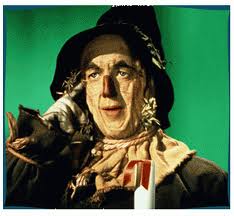 So, last week was an amazing week for my blog. It appears that I struck upon a topic of interest for the non-profit community when I focused on special events and how some agencies make poor decisions around return on investment (ROI) decisions and volunteer utilization. While I promised myself that I would end that discussion thread about zombies, I decided this morning over coffee to continue down “the yellow brick road” a little further by changing metaphors. It is Halloween season after all. LOL
So, last week was an amazing week for my blog. It appears that I struck upon a topic of interest for the non-profit community when I focused on special events and how some agencies make poor decisions around return on investment (ROI) decisions and volunteer utilization. While I promised myself that I would end that discussion thread about zombies, I decided this morning over coffee to continue down “the yellow brick road” a little further by changing metaphors. It is Halloween season after all. LOL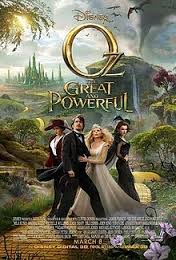 This last weekend the
This last weekend the  If your agency is not in a position where you can make your donors’ wishes come true, then you better have skilled staff who possess talents and skills like The Wizard.
If your agency is not in a position where you can make your donors’ wishes come true, then you better have skilled staff who possess talents and skills like The Wizard.